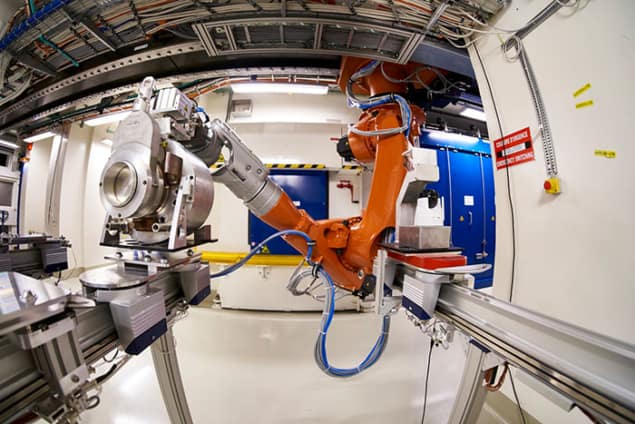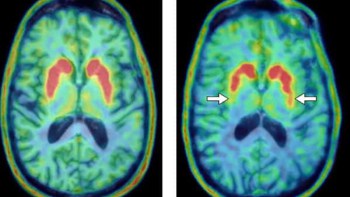
The new CERN-MEDICIS facility in Geneva has produced its first radioactive isotopes for medical research. Linked to CERN’s ISOLDE facility, CERN-MEDICIS will provide a range of medical isotopes for hospitals and research centres across Europe.
ISOLDE produces exotic radioactive nuclei by firing a high-intensity proton beam at a solid target. These nuclei are then formed into low-energy beams and studied by nuclear physicists. However, only about 10% of the beam is absorbed by the ISOLDE target – leaving the rest for CERN-MEDICIS.
Medical isotopes are made by placing the appropriate solid target downstream from ISOLDE. After it is irradiated with protons, the target is moved on a conveyor belt to a mass-separation system where the isotopes are extracted from the target and then implanted in metal foils. These foils are shipped to nuclear chemistry labs at hospitals and research labs where they are bound to specific biological molecules – which are used for therapy and imaging applications.
Gamma-ray imaging
The first isotope produced at CERN-MEDICIS is terbium-155, which is one of four terbium isotopes that show great potential for medical applications. When terbium-155 decays it emits a gamma-ray, which means that it could be used for single-photon emission computed tomography. This involves binding the isotope to a biological molecule and injecting it into a patient, where it accumulates in a region of interest such as a tumour or specific parts of the brain or heart. The patient is then surrounded by gamma-ray detectors to produce a 3D image of the region of interest.
Led by CERN, the CERN-MEDICIS programme is paid for in part by CERN’s Knowledge Transfer Fund. Money also comes from private foundations, other participating research institutes and the European Commission.



